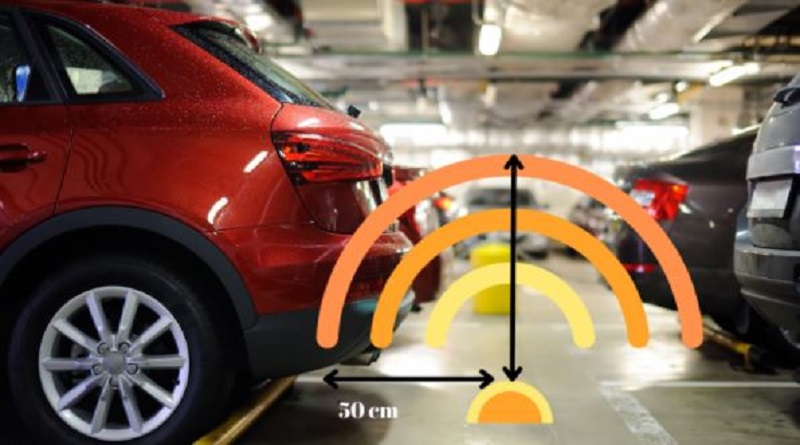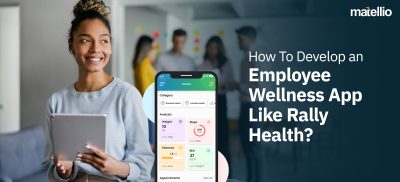
With the rapidly increasing urbanization rate, parking is becoming a big problem, especially in big cities. As more people move to the urban areas and choose to own private vehicles, the traffic and pollution problems will also increase significantly.
According to a UN Department of Economic and Social Affairs (UN DESA) report, most of the increase in the global population, which is supposed to be 68% by 2050, will reside in urban areas. It is a staggering growth and threatens to put enormous strain on many facets of urban life, from pollution, living arrangements, and of course, traffic and parking.
But there are very few problems that we can’t solve with technology. With the help of next-gen technologies like IoT and AI/ML, cities are now making smart parking systems.
When coupled together, IoT and AI/ML can achieve great things. Already we are seeing smart buildings and cities become a growing trend. With the help of IoT, cities can be made safer, and traffic can be governed in a fashion that reduces the number of pile-ups and accidents.
IoT has revolutionized factories and smart-home space, and now it is time for widespread adoption of this technology to simplify our lives. And smart parking systems are an important step in that direction.
Realizing the need to create sophisticated IoT-based smart parking systems, more and more startups are trying to lead the revolution. According to an IoT Analytics report, the market spending for smart parking systems is expected to hit the $3.8B mark at a CAGR of 14% by 2023. And today, we will learn how to develop an IoT smart parking system.
Key Takeaways:
What is an IoT-based smart parking system, and how does it even work?
For the uninitiated, IoT, or the Internet of Things, is a network of devices connected to one another over the internet.
Now one might think, how is that different from normal internet? Well, the difference here is in the type of devices we are talking about.
In IoT, devices such as smartwatches, printers, coffee machines, sensors, etc., are all internet-enabled and exchange alerts, data, etc., with one another over the internet. By doing so, they create an ecosystem that makes life easier for the user, especially when coupled with AI/ML. Imagine your house knowing what you’ll need and when and taking action to make it happen. In a way, it knows about a need before it even arises. Thanks to the ease and connectivity it provides, IoT has made its way to industries like smart factories, retail stores, hospitals, and of course, smart parking systems.
It may sound like a complicated thing to implement, but in reality, given how far the IoT, sensor, and microcontroller technologies have come, it isn’t all that hard.
An IoT-based smart parking system uses sensors and microcontrollers to identify empty parking spots in an area, a building’s parking lot, or a street. This data is then periodically sent to the cloud, from where it is streamed to websites and mobile applications in real-time.
So, when a user enters a parking lot, they can use the website or the mobile app to find empty parking spots and choose the most convenient one for them.
Now that we know what IoT-based smart parking systems are and have some idea about how they work, let’s try to dig deep and implement one of our own.
Also Read: IoT Consulting Services: Everything You Need to Know
How to Develop an MVP for an IoT-based Smart Parking System?
In this section, we will implement an MVP for a smart parking system. To implement this, we will need three things:
- Hardware, like microcontrollers and distance measuring sensors
- Cloud infrastructure, like Amazon Web Services: AWS IoT, AWS Lambda
- User interface, which can either be a web interface or a mobile application
Planning & Research
The first step in the process to develop anything is planning and research. When there are many hardware and sensors involved, things get even dire without proper research.
There is no one way to build an IoT-based smart parking system or one right kind of hardware. You first need to do market and industry research and see what devices others are using. Furthermore, keep an eye out for innovations in this space. IoT is an evolving sector, and there is always something new and better coming. So if you find a way to implement your smart parking system that is easy, cost-effective, and fault-tolerant, then by all means, adopt that way for your system.
Given below is a list of things you will need to figure out before:
- Sensors (Ultrasonic, EMF, Infrared, etc.), microcontrollers
- Cloud-based IoT services like AWS, Microsoft Azure IoT Hub, etc.
- Network protocols (MQTT, etc.)
- User interface (Web apps or mobile apps)
Once you have figured out the above things, the next step is coming up with a budget and hiring an IoT expert to help you along the journey.
Most startups these days choose to get their MVP developed by one of many top development companies in the market. These companies offer great services at cost-effective rates that fit every budget. Most startups don’t have the luxury to build an in-house development team. It costs to manage infrastructure, pay regular salaries to employees, etc. An easier way is to hire a third-party developer who provides hourly services.
But if you don’t like the idea of completely outsourcing your development project, you can hire an IT staff augmentation company. Instead of hiring full-time talent, you can rent them from these companies to provide additional support to your in-house team.
Building the architecture for an IoT-based smart parking system
Once you have a development team on board, you can figure out how to implement it. We have created an example that might help you with your MVP for this blog.

As you can see in the architecture diagram above, in our MVP, there are three key parts:
The first is the sensory part, which comprises two sub-parts: a distance sensor and a microcontroller.
The distance sensor captures the distance data and transmits it periodically to the microcontroller. The microcontroller then takes that data and gives it to a cloud service using a messaging protocol.
The distance sensor measures the distance to the nearest obstacle, and if it is under a set value, it considers that there is a car parked in the spot and puts it in the OCCUPIED state. And if it is more than that distance, it considers that spot in the FREE state. For instance, let’s say that in our MVP, our distance sensor considers a spot free if the nearest obstacle is more than 50 cm away and anything below that is read as occupied.

This state data is then transmitted to the microcontroller, which sends it to the cloud using a messaging protocol. On the cloud, this state data of the parking spot is read by a cloud computing service and then provided to the user.
The final block of this setup is the user interface. When the user accesses the web interface or the mobile application, he sends a request to the computing service, retrieving the state data from the IoT services. If the state is OCCUPIED, the spot is shown as red on the interface, and if the state is FREE, it is shown in green.
Also Read: How to Develop an App Based on Internet of Things?
Creating a user interface
The final piece of the puzzle is the user interface. Most startups these days opt for good looking and easy to use mobile applications over web interfaces, but it might be a good idea to have both of them. Developing a mobile application is a complex process unto itself. The IoT developers you hired will help you strike the perfect balance between visual appeal and utility for your user interface.
A mobile application must be well designed and optimized to run on all operating systems. Furthermore, while it should provide good features, it shouldn’t be cluttered with them. It will slow your app down and frustrate your users.
At the end of the day, you are creating a solution to help users access a certain type of information, and that is it. So your interface doesn’t need a deep set of features. But once you start expanding on your MVP, you can add features like booking a spot to flesh out your solution properly.
Test and Enhance
Once you have your MVP ready, it’s time to test it to achieve flawlessness. One of the biggest reasons behind creating an MVP is to see if a proposed idea can be achieved or not. But it can also be used to impress potential investors. Startups are always looking to get more finances and dream bigger, and an MVP polished to perfection can help them achieve that. So throw every curveball at your IoT-based smart parking solution and see how effective it is.
Once you have tested it, it’s time to enhance it. An MVP is smaller in scale than a full project. But once you have the budget to go big, the sky’s the limit. Depending on the area that you are trying to automate, you will need to pick the hardware. Your IoT experts should be able to help you with that. They will likely suggest using the LoRaWAN protocol since it is designed as a low energy consumption LoRa enabled device.
Furthermore, you can add a layer of security to your parking area by bringing data science and computer vision into play. Camera’s can read license plates to identify cars and only let them into the parking area if they are in the database. Furthermore, using AI/ML techniques, any suspicious activities in the parking lot can be spotted as well.
Furthermore, you can consider adding AR and guidance technologies on the custom web and mobile app side of things. If the parking area is large enough, these technologies can help users find their way to the open parking spot, thus further streamlining the process.
Conclusion
As the IoT trend gains more popularity every year, its long-standing promise of connecting the entire world, bringing all aspects of our lives to the internet in an attempt to make our lives easier, is now close to being fulfilled. And with IoT-based smart parking systems, it is making strides in that direction. Growing urbanization is causing many problems and is increasingly making it harder for people to find spots for their vehicles. Spending precious minutes cruising down streets or crisscrossing in parking lots to find a place to park your car is nothing short of being soul-crushing. But with the flawless implementation of sensors, network protocols and a smart, intuitive mobile app or a web app, this problem can easily be solved.
If you are looking to build an IoT-based smart parking system of your own, then Matellio is the right partner for you. Our years of experience working with IoT technologies such as LoRaWAN and Zigbee gives us an edge over other mobile app and IoT App developers in the market. Our IoT experts understand the market and can build architectures to meet complex demands.
If you want to hire an expert IoT app developer, contact us and book a free consultation today!




